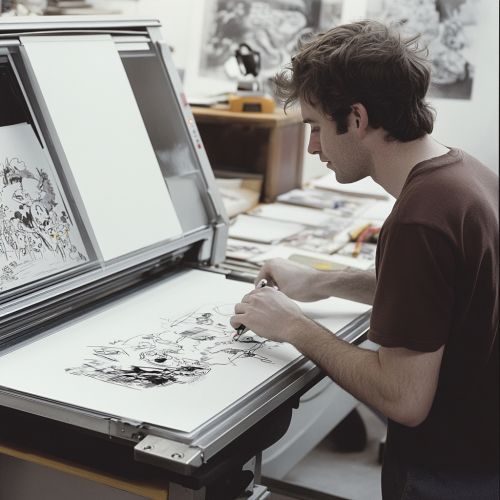Use of Xerography in Animation
Introduction
Xerography, a dry photocopying technique invented by Chester Carlson in 1938, has had a profound impact on various industries, including animation. The use of xerography in animation revolutionized the process of transferring drawings to cels, significantly altering the workflow and aesthetic of animated films. This article delves into the historical context, technical aspects, and the broader implications of xerography in the field of animation.
Historical Context
Early Animation Techniques
Before the advent of xerography, traditional animation relied heavily on labor-intensive processes. Animators would draw characters and backgrounds on paper, which were then manually traced onto transparent cels using ink. This method, known as hand inking, required a team of skilled inkers and was both time-consuming and costly.
Introduction of Xerography
Xerography was introduced to animation by Ub Iwerks, a pioneering animator and technician at Walt Disney Studios. In the late 1950s, Iwerks adapted xerographic technology to streamline the cel animation process. The first feature film to fully utilize xerography was Disney's "101 Dalmatians" (1961), which showcased the technique's potential to handle complex scenes with numerous characters.
Technical Aspects of Xerography in Animation
The Xerographic Process
Xerography involves several steps to transfer drawings onto cels:
1. **Preparation of Drawings**: Animators create pencil drawings on paper. 2. **Photocopying**: The drawings are placed on a xerographic copier, which uses a photoconductive drum to transfer the image onto a cel. 3. **Fixing the Image**: The transferred image is fixed onto the cel using heat, creating a permanent copy.
This process eliminates the need for manual inking, reducing production time and costs.
Advantages and Limitations
Xerography offered several advantages over traditional hand inking:
- **Efficiency**: The process significantly reduced the time required to transfer drawings to cels.
- **Consistency**: It ensured uniformity in line quality, reducing human error.
- **Cost-Effectiveness**: Fewer inkers were needed, lowering labor costs.
However, xerography also had limitations:
- **Line Quality**: Early xerographic lines were often rougher and less refined than hand-inked lines.
- **Color Limitations**: Initially, xerography was limited to black lines, although later advancements allowed for colored lines.
Impact on Animation Aesthetics
Visual Style
The introduction of xerography brought a distinct visual style to animated films. The rougher, more textured lines gave a unique aesthetic that contrasted with the smooth, polished look of hand-inked cels. This style became particularly associated with Disney's films of the 1960s and 1970s.
Character Design and Animation Techniques
Xerography influenced character design and animation techniques. Animators began to experiment with more detailed and complex designs, knowing that the xerographic process could handle intricate line work. This led to a richer visual experience and more dynamic character movements.


Broader Implications and Legacy
Influence on Other Studios
The success of xerography at Disney prompted other animation studios to adopt the technique. Studios like Hanna-Barbera and Warner Bros. Animation integrated xerography into their workflows, leading to a broader industry shift towards more efficient production methods.
Transition to Digital Animation
While xerography was a significant technological advancement, it was eventually supplanted by digital animation techniques in the late 20th century. Digital tools offered even greater efficiency and flexibility, allowing animators to create and manipulate images directly on computers. However, the principles of xerography laid the groundwork for these digital advancements.
Conclusion
The use of xerography in animation marked a pivotal moment in the history of the medium. By streamlining the cel transfer process, it allowed for greater efficiency, consistency, and creativity in animated films. Although eventually replaced by digital techniques, the legacy of xerography endures in the history of animation as a transformative innovation.
